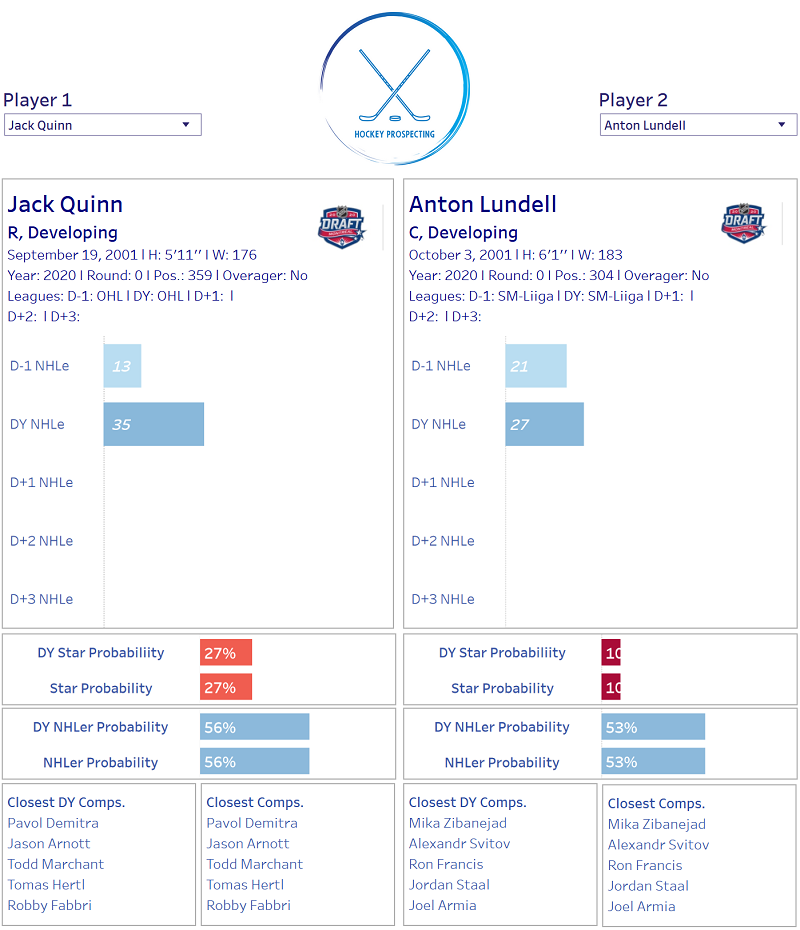
By Steve Cavolick
Who’s your guy in this year’s NHL Draft?
It’s a strange question in July, considering the NHL season is normally over at this time of year and that the draft has already occurred. But there’s nothing normal about this year.
For the past four months, I’ve been writing about how companies are using their data and analytics to navigate the new economy that has been left in the wake of COVID-19. But I miss professional sports, and this month I am going to write about how advanced analytics are helping hockey teams evaluate players in their minor league system so they can more accurately draft players in positions of need.
Building from within through the draft is the most cost-effective way to develop a team. When deficiencies in a team develop and can’t be filled by already-drafted players, teams are forced to sign expensive free agents to fill those holes. That’s why drafting well is so important.
Each year, hundreds of young hockey players across nearly 50 worldwide professional leagues become available for drafting. Teams understand the physical measurements of each player, but evaluating their performance across leagues with varying competition is difficult. Is scoring 50 points in Switzerland’s National League better than 60 points in Canada’s Western Hockey League?
A new statistic from the website Hockey Prospecting, NHL Equivalency (NHLe), uses an algorithm to predict the offensive output you can expect from a player when they get to the NHL. This solves the problem of standardizing non-drafted player output across all leagues worldwide. In addition, NHLe examines production of drafted players by comparing their offensive statistics for five years, beginning with their pre-draft year. Stats at the same times in their careers are compared to every skater drafted over the past 30 years (over five thousand) and creates a similar player comparison. This helps teams estimate what to expect from prospects who are ready to make the jump to the pros.
Let’s take a look at how this could be used for my favorite team, the Chicago Blackhawks. In their past five drafts, they’ve had 10 picks in the top 60. Six have been on defensemen, and four on forwards. Two of the four are already in the NHL, but beyond that, none of the forwards in their system are predicted to be Top-6 guys.
Using the Drafting Tool from Hockey Prospecting, let’s focus on the player who is considered Chicago’s best minor league forward prospect: MacKenzie Entwistle. The algorithm measures players on two metrics: NHLer Probability (playing at least 200 games in the NHL) and Offensive Star Probability (0.7 points per game for forwards over a career). It calculates these for the year they were drafted and as a cumulative measure during their development.
MacKenzie’s NHLer Probability has decreased from 37% to 14% since being drafted, and his Star Probability has decreased from 4% to 0%. That is not saying he can’t make to the NHL and become a star, but based on the performance of thousands of players before him with similar statistics, it is unlikely to happen.
Because of this, it is widely believed by draftniks that the Hawks will focus on forwards this year. With the draft order mostly already determined, many mock drafts have the Blackhawks selecting either Jack Quinn or Anton Lundell. Let’s see what Hockey Prospecting’s model says about them.

In 2019, the NHLe for Quinn and Lundell were 13 and 21, respectively. In their Draft Years (DY), the NHLe increased for both, but Quinn’s almost tripled. They both have a few years of seasoning before playing in the NHL, but the offensive development of Quinn this year was greater. Their NHL Probabilities are similar, although there is more Star Probability for Quinn at this point. Both players have superstars in their player comparison.
So if I was on the clock and had to choose between these two, who’s my guy? Based on two years of performance, it looks like Quinn has the higher floor at this point and has a higher (although still low) Star Probability. Quinn is my choice.
Not every one of your outcomes leads to signing a player to a multi-million dollar contract, but at least with predictive models and a trusted information architecture, you can use you can use your data for fact-based decisioning throughout your organization.
The LRS Big Data and Analytics team has over 20 years of experience deploying applications in advanced analytics, information management, and data warehousing. Not sure how to get started? Our strategic offerings can help you align business and technology teams, discover right use case, and determine an ROI. If you are interested in understanding how we can help you find value in your data, please fill out the form below to request a meeting.
About the author
Steve Cavolick is a Senior Solution Architect with LRS IT Solutions. With over 20 years of experience in enterprise business analytics and information management, Steve is 100% focused on helping customers find value in their data to drive better business outcomes. Using technologies from best-of-breed vendors, he has created solutions for the retail, telco, manufacturing, distribution, financial services, gaming, and insurance industries.